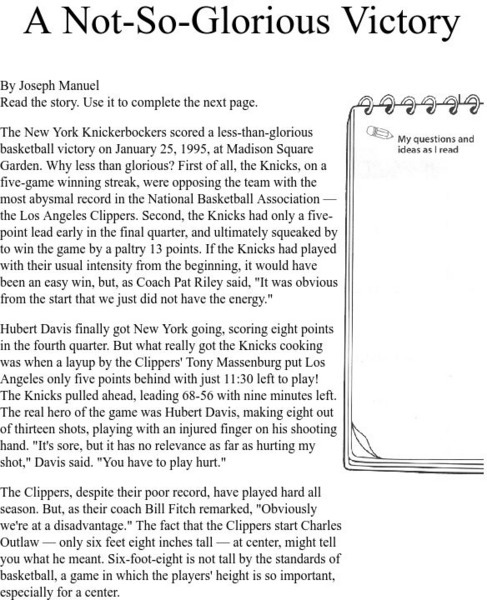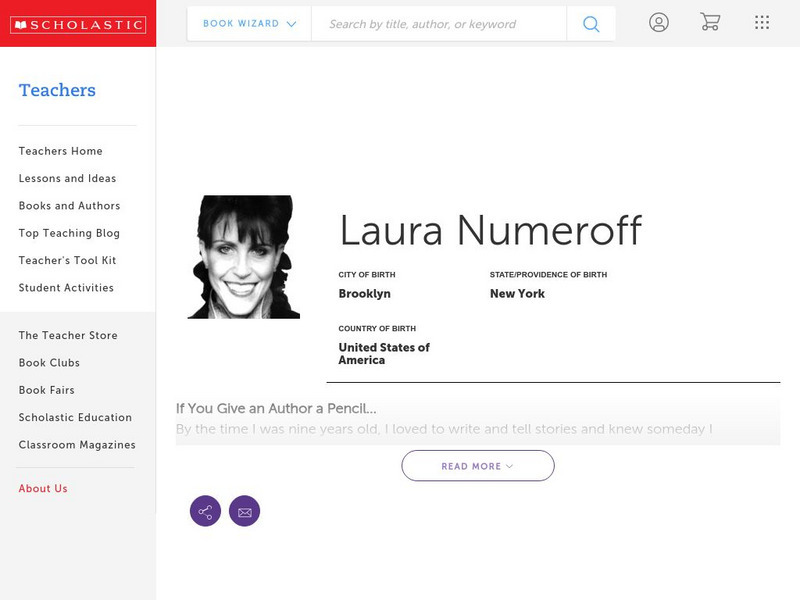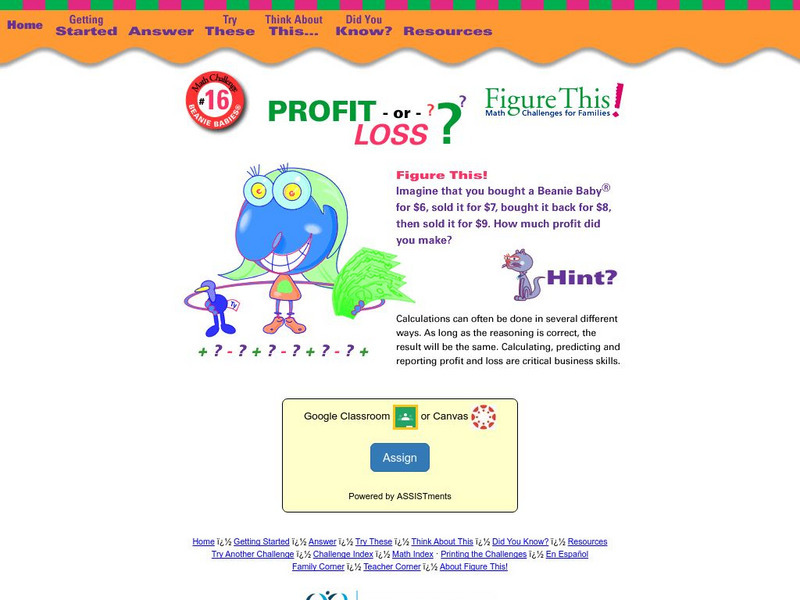American Museum of Natural History
American Museum of Natural History: O Logy: Fighting Dinos: New Discoveries
A virtual investigation surmising how two fighting dinosaurs died in the Gobi Desert.
Read Works
Read Works: 1st Grade Unit: Supporting Predictions
[Free Registration/Login Required] A lesson utilizing the book No Roses for Harry! by Gene Zionin in which students make a prediction and then support it with details from the text. Ideas for direct teaching, guided practice, and...
Sophia Learning
Sophia: Making Predictions
Notes on using the reading strategy of making predictions before and during reading to increase comprehension. Notes can be both read and listened to.
E Reading Worksheets
E Reading Worksheets: Making Predictions Worksheets and Lessons
In this learning module, students will learn more about making predictions in reading. Worksheets and a leson are provided to support Tier I, Tier II, and Tier III students.
A to Z Teacher Stuff
Guided Reading: If You Give a Mouse a Cookie
This lesson plan helps students to make predictions using the pictures and text of "If You Give A Mouse A Cookie."
Other
Fcps Curriculum, Instruction and Assessment: Activity #1: Making Predictions
This activity focuses on making predictions through critical thinking. Students read the title and view a few pictures from a story prior to reading it and record their predictions. After reading the story, students then compare their...
PBS
Pbs Learning Media: Blue Ribbon Readers: The Detective's Notebook Game
An online learning game where students read the notes in a detective's notebook and make inferences and predictions to solve the case.
Teachers.net
Teachers.net: Cause and Effect
Simple and effective method for introducing primary students to the concept of cause and effect in literature.
Florida Center for Reading Research
Florida Center for Reading Research: Monitor for Understanding: Plenty of Predictions [Pdf]
A lesson plan in which students read a text stopping to make predictions and then determine if those predictions were correct. Materials are included.
Scholastic
Scholastic: A Not So Glorious Victory
After reading "A Not-So-Glorious," Victory, which is included on this page, have your students practice identifying cause and effect using the printable worksheet.
Scholastic
Scholastic: Laura Numeroff Biography
This resource features a biography of the author Laura Numeroff. Students and teachers will benefit from this inside look at the life and work of this children's author.
Alabama Learning Exchange
Alex: What Is the Pulgar?
This is a lesson for students in grades 4-6 to learn visualization, prediction, and sequencing.
Alabama Learning Exchange
Alex: Lip Balm Science
During this activity, students will make three types of lip balm. They will then predict which lip balm they think will be preferred by testers and test that prediction by collecting data from testers who sample the lip balms. They will...
Alabama Learning Exchange
Alex: The Legend of the Mummy's Curse Fact or Fiction?
This is a technology-based, hands-on Biology lesson used to introduce the scientific method to students. Students will make a prediction on whether they think the curse is true or false. Students will listen to a podcast describing a...
Alabama Learning Exchange
Alex: Guess My Shape
The students will make the connection between 2-D and 3-D shapes using modeling clay and geometric solids and participate in an interactive web lesson. Students will make predictions about what 2-D shape they think will be made when they...
Alabama Learning Exchange
Alex: Teaching Measurement: Literature and Manipulatives
The tradebook, Who Sank the Boat? by Pamela Allen, is an excellent tool in teaching measurement. Learners will engage in activities involving different types of measurement. In the story, five animal friends decide to take a boat ride....
Alabama Learning Exchange
Alex: Making Predictions
This lesson plan will use the trade book, Balto, the Dog Who Saved Nome, to teach making predictions. Students will also learn the true story of Balto and create their own fictional story of Balto.
Better Lesson
Better Lesson: Introduction to Making Predictions and Inferences
First graders will engage in a shared reading of "Mr. C's Dinner" so that we can build a foundation for understanding what it takes to make good predictions and inferences.
National Council of Teachers of Mathematics
Nctm: Figure This: Beanie Babies, Profit or Loss
Is you Beanie Baby business booming or busted! Figure out if you made a profit or lost money in this mathematic computation activity. A one page activity from the NCTM Math Challenges for Families collection that focuses on adding and...
ClassFlow
Class Flow: Two Bad Ants Realism vs. Fiction Writing
[Free Registration/Login Required] This flipchart was designed to accompany Scott Foresman Reading- 3rd grade- Unit 6- Two Bad Ants by Chris Van Allsburg. It covers a variety of reading strategies, including making predictions, context...
University of Cambridge
University of Cambridge: Nrich: Bike Ride
On this one page website sharpen your logic and rate measurement skills while working on this challenge. The solution is available to double check your solution.
SMART Technologies
Smart: Inference and Prediction
Students will learn the difference between making a prediction and an inference as they engage in class discussions about both reading skills, play a game, look at art, and listen to songs.
Other
Nsw Dept. Of Ed.: Predicting [Pdf]
PDF page from the New South Wales, Australia, Department of Education and Training that contains suggestions for helping students predict the outcome of something they are about to read. It includes some suggestions for how to achieve...



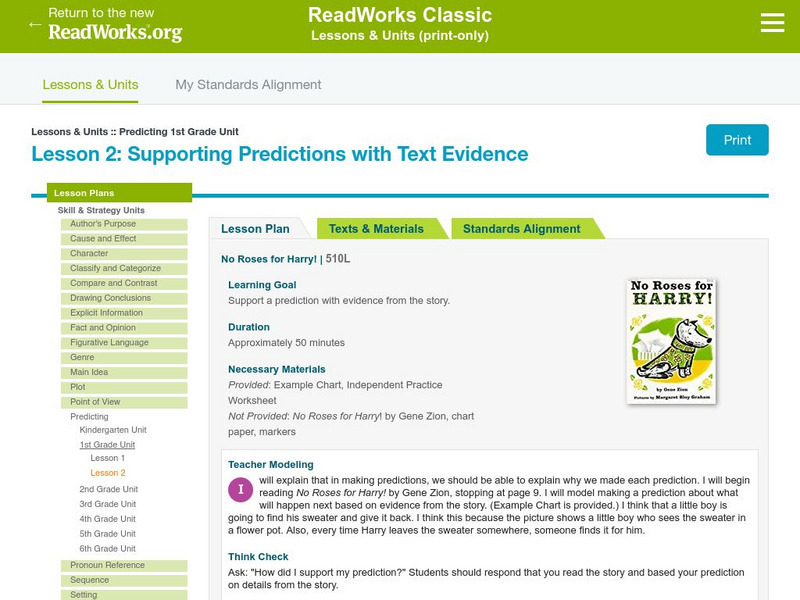


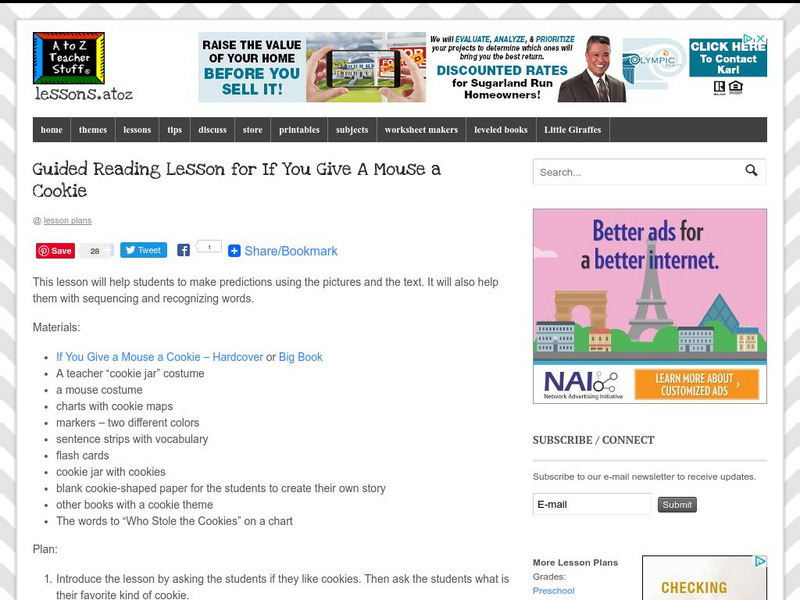

![Florida Center for Reading Research: Monitor for Understanding: Plenty of Predictions [Pdf] Lesson Plan Florida Center for Reading Research: Monitor for Understanding: Plenty of Predictions [Pdf] Lesson Plan](https://content.lessonplanet.com/knovation/original/509082-b4f40bd285bf0a811b718583207d0e0e.jpg?1661787000)
